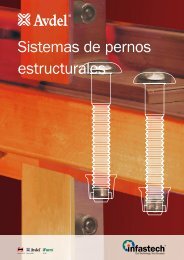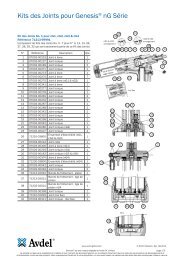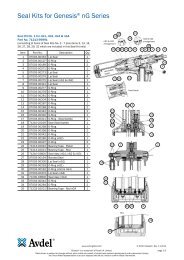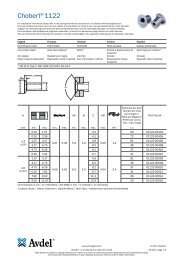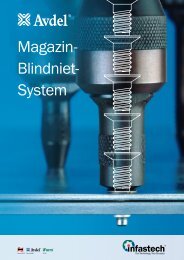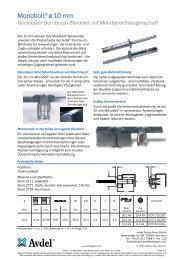History Brochure - Avdel Global
History Brochure - Avdel Global
History Brochure - Avdel Global
Create successful ePaper yourself
Turn your PDF publications into a flip-book with our unique Google optimized e-Paper software.
In 1936 from a small<br />
shed in Godalming Surrey<br />
Stanley Thomas Johnson<br />
started a business called<br />
Aviation Developments. The<br />
company was established to<br />
manufacture & supply riveting<br />
technology, to a number<br />
of industries, but primarily<br />
for the rapidly developing<br />
Aviation industry. At that time<br />
aircraft constructed using<br />
wooden materials could no<br />
longer meet the demands put<br />
upon them and wood was in<br />
the process of being replaced<br />
by more compact, stronger,<br />
aluminium structures.<br />
Initially these structures were<br />
assembled using solid rivets<br />
that were slow to install,<br />
requiring two operators with<br />
access to both sides of the<br />
components to be assembled.<br />
Working with the pioneering UK<br />
Aviation Engineers of the time<br />
one of Aviation Developments<br />
Engineers, Jacque Chobert,<br />
invented a radical new riveting<br />
technology, the Chobert ® riveting<br />
system.<br />
75 Years of <strong>Avdel</strong><br />
1930 - 1940<br />
Initially Chobert ® fasteners could<br />
only be installed one at a time.<br />
Aviation Developments Engineers<br />
soon recognised this limitation and<br />
set about developing a tool capable<br />
of installing multiple fasteners<br />
before requiring reloading. This<br />
represented the company’s first<br />
steps in what we currently recognise<br />
as providing a total system solution<br />
to our customers i.e. both fastener<br />
and installation tooling.<br />
- 3 -<br />
The Chobert ® system allowed<br />
rivets to be installed by a<br />
single operator using a hand<br />
tool accessing one side of<br />
the riveted joint - significantly<br />
reducing both assembly times<br />
and costs. The concept of<br />
assembly from a single side<br />
of the application became<br />
generically known as blind<br />
fastening. This advanced<br />
system was quickly adopted<br />
by the UK Aviation industry<br />
and proved invaluable in<br />
building more than 20,000<br />
Spitfire fighter aircraft over<br />
a period of eight years that<br />
were key to the success of the<br />
Battle of Britain.





